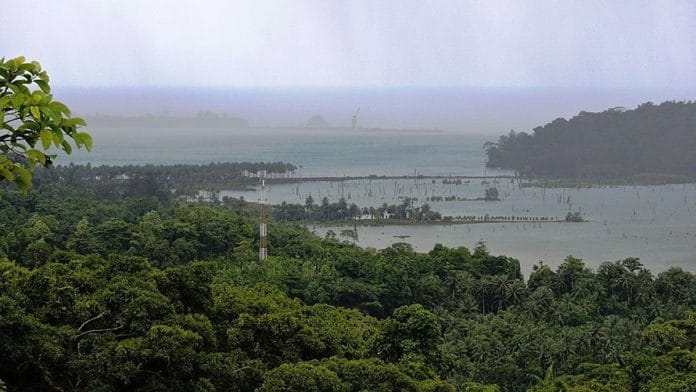New Delhi: Clearances for projects and other purposes in protected areas shot up by more than 20 times in a span of five years, data presented in the Lok Sabha Monday revealed.
In 2018, the number of forest, wildlife, coastal regulation zone, and environmental clearances granted was 577, but this number rose to 12,496 — the highest ever — in 2022. The numbers were sourced from PARIVESH portal. The Union government’s digital single-window clearance platform, PARIVESH stands for Pro Active and Responsive Facilitation by Interactive and Virtuous Environmental Single-window Hub and is where clearances are tracked. It was launched in 2018.
By 2019, clearances granted had risen to 3,498. This rose to 8,169 by 2020 and to 8,793 in 2021.
“Ministry of Environment, Forest and Climate Change has taken several measures through policy and technological interventions in order to remove redundancy and to streamline the clearance process with the environmental safeguards,” state environment minister Ashwini Kumar Choubey told Parliament, in response to a question raised by Pocha Brahmananda Reddy and Beesetti Venkata Satyavathi of the YSR Congress Party.
He added that the time taken to grant environmental and coastal clearances had reduced from over 150 days in 2019 to less than 70 days in 2022. For forest clearances, too, the waiting time had come down by about a week to around 180 days in 2021-22, he said.
Environmentalists, however, have expressed concern at the speed with which clearances are awarded for projects, arguing that they come at the cost of thorough environmental impact assessments.
The government, however, has “expanded” the scope of the PARIVESH portal to further expedite the clearance process, while ensuring “due diligence and adherence to environmental safeguards”, Choubey said.
Also read: Cheetah brought to India last year dies of kidney ailment, MP govt says was sick before arrival
PARIVESH 2.0
The upgraded PARIVESH portal — yet to be fully operational — includes a common application form for all clearances “to minimise the repetitive efforts” of applicants seeking clearance, Choubey said.
The portal, via a module called “Know Your Approval”, will help applicants identify the list of clearances required for a particular project and “in assessing the environmental sensitivity and planning of the project before its execution”.
The minister said a Compliance Management module has been introduced to “ensure reduction in compliance burden and improve ease of doing business”, adding that committees in charge of granting final clearance will be assisted by a Decision Support System (DSS), a spatial-based visualisation and analytical module which will assist in “taking a considered decision in an expeditious manner”.
“However, all processing of proposals for grant of environment clearance is on the basis of an environmental impact assessment or environmental management plan, examined by the duly constituted Expert Appraisal Committees (EACs),” Choubey said. “Final approval is given only after incorporating general and specific conditions so as to ensure compliances of environmental standards and safeguards.”
The EACs are the regulatory authorities that decide whether to grant clearance to a project or not based on the project’s necessity and likely environmental impacts, among other criteria.
Changes in environment clearance process
In recent years, the government has made several changes to the environment clearance (EC) process to give industries more leeway, which environmentalists say is to the detriment of India’s forests, coasts, and wildlife.
Last year, the government introduced a “star rating system” for states based on how quickly they granted environmental clearances, in the interest of improving “ease of doing business.” The move was opposed by environment experts, who said it would dilute environmental safeguards. The government maintained it was proposed to improve “efficiency in decision-making.”
The government had also introduced a spate of changes to the environment clearance process, proposing to exempt certain projects, like highways considered of “strategic importance”, while making exceptions for others, like extending EC validity for nuclear and hydro projects. Legal think tank Vidhi Centre for Legal Policy found that several of these changes were made outside the scope of existing environmental law.
(Edited by Zinnia Ray Chaudhuri)






